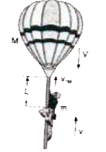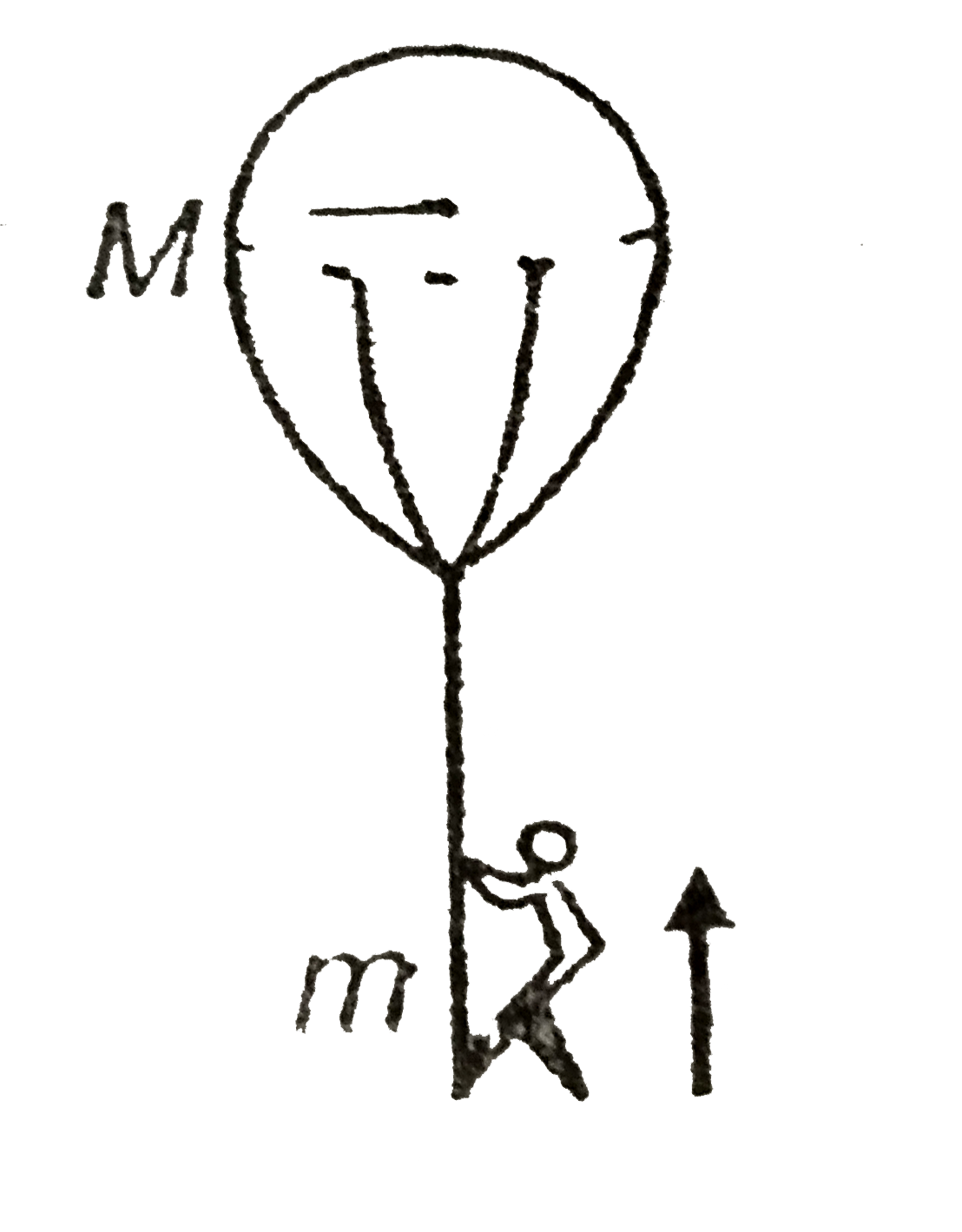A man of mass m climbs a rope of I length L suspended below a balloon of mass M. The balloon is stationary with respect to ground (a) if the man begins to climb up the rope at a speed vnl (relative to rope) in what direction and with what speed (relative to ground) will the balloon move ? (b) How much has the balloon descended when the man reached the balloon by climbing the rope ?
(a) Given that initially the system is at rest, so initial momentum of the system is zero. In the claiming of the rope there is no external force.
Therefore final momentum of the system should also be zero.

m→v+M→V=0 [as (m+n) = finite]
i.e., M→V=−m→v.....(1)
Furthermore here it is given that
→vm=→v−→V.....(2)
Substituting the value ofy from Eqn. (20 in (1)
we get M→V=−m(→vm+→V) or →V=−m→vrelm+M.... (3)
This is the desired result and from this it is clear that the direction of motion of balloon is opposite to that of climbing (→vrel) vertically down.
Similar Questions
A man of mass m climbs a rope of length L suspended below a balloon of mass M. The balloon is stationary with respect to ground. If the man begins to climb up the rope at a speed vrel. (relative to rope) in what direction and with what speed (relative to gound) with the balloon move ?
View SolutionA man of mass m climbs a rope of length L suspended below a balloon of mass M. The balloon is stationary with respect to ground. If the man begins to climb up the rope at a speed vrel. (relative to rope) in what direction and with what speed (relative to gound) with the balloon move ?
View Solution
Knowledge Check
A man of mass M hanging with a light rope which is connected with a balloon of mass m. the system is at rest in air. When man rises a distance h with respect to balloon find. The distance raised by man
Amhm+MBMhm+MCm+MmhDm+MMh
A man of mass m climbs to a rope ladder suspended below a balloon of mass M. The balloon is stationary with respect to the ground.
(a) If the man begins to climb the ladder at speed v (with respect to the ladder), in what direction and with what speed (with respect to the ground) will the balloon move?
(b) What is the state of the motion after the man stops climbing?
View SolutionA man of mass m climbs to a rope ladder suspended below a balloon of mass M. The balloon is stationary with respect to the ground.
(a) If the man begins to climb the ladder at speed v (with respect to the ladder), in what direction and with what speed (with respect to the ground) will the balloon move?
(b) What is the state of the motion after the man stops climbing?
View SolutionA man of mass m is suspended in air by holding the rope of a ballon of mass M. As the man climbs up the rope, the ballon

View SolutionA man of mass m is suspended in air by holding the rope of a ballon of mass M. As the man climbs up the rope, the ballon

View SolutionA man of mass m is suspended in air by holding the rope of a ballon of mass M. As the man climbs up the rope, the ballon

View SolutionA balloon of mass M is stationary in air. It has a ladder on which a man of mass m is standing. If the man starts climbing up the ladder with a velocity of relative to ladder, the velocity of balloon is
View SolutionA man of mass m is standing on a plank of equal mass m resting on a smooth horizontal surface. The man starts moving on the plank with speed u relative to the plank. The speed of the man relative to the ground is

View Solution
